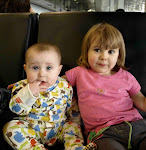
Each family unit has its own blue or green cross outside, which has more to do with the Mayan sacred ceiba tree than any Christian symbolism, and all marriage and death ceremonies are performed here. Each day the families bless the cross with incense, and garland it with leaves to represent the tree of life.
Life in Chamula is governed by a system of ‘cargos’ or religious responsibilities. Each cargo-holder represents a Catholic saint who is also a Mayan god, and is responsible for holding fiestas in the saint’s/god’s honour. Therefore there are parties every day.
Our guide, Alberto, explains things very well. We walk round the village, seeing places I have not seen before, and stopping in front of the large ceremonial crosses next to an area where the women are doing their washing. He explains how the Mayan calendar ends a phase in 2012 and the Mayans believe a new type of world will dawn.

Watching women washing their clothes in their traditional costume with their sheep tethered nearby, it seems like nothing has changed for thousands of years, except if you look closely they all have mobile phones.

For any first time visitor to Chamula the real shock is a trip inside the church, where taking photos is forbidden. Built by the Conquistadores and subverted by the Chamulans, the church contains thousands upon thousands of candles, lit by families asking for healing from physical or spiritual ailments. The saints, who are not really saints in the Catholic sense any more, are arranged round the walls, where people can ask them for help to heal them (or harm others).
Chamulans will go to a local shaman when they have a problem, who will take them to church, light candles in front of a saint and perhaps kill a chicken to exorcise evil in the body. He is also likely to suggest drinking Coca Cola or another refresco in order to burp and cleanse the body further. It really is an astonishing thing to see.

After Chamula we visit Zinacantan, an altogether more prosperous village where the Catholicism is a little less outlandish. A local weaver’s family cook us tortillas and try to sell us weavings, but mostly end up carrying Daisy around and chatting to her. Bel and Dave look lovely in some traditional Zinacantecan costumes and we taste ‘posh’, the local spirit.

In the evening we visit another traditional family, in the form of Enrique and Mariet. They are all in their best clothes for the occasion, and we feel bad for turning up in jeans. We visit ‘Mr Taco’ to buy tacos ‘al pastor’, although Conche insists on eating ‘cow’s head tacos’ instead. Mum, Bel and Dave decline a taste of them. Considering Mariet and Conche don’t speak English and the family don’t speak Spanish, it goes surprisingly well.



No comments:
Post a Comment